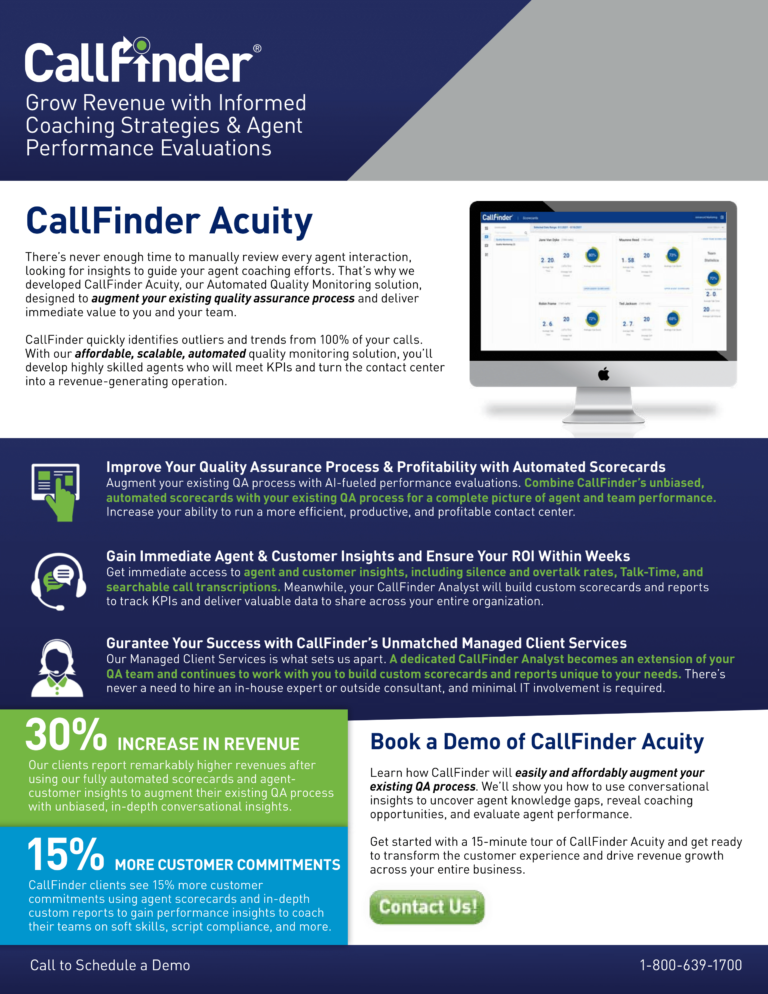
Today’s businesses may find themselves wondering which is more important: Keeping customers happy or making a profit? Actually, they’re equally important. A business cannot last if it is not making money, and it cannot make money if its customers are unhappy. And the contact center is usually the very first facet of a business that can make or break a customer experience.
Unfortunately, most contact centers are not performing as well as they might think. Studies show a measly 14% of complaints are sufficiently resolved on the first call(1), and most end up involving 4.2 contacts to help fix the problem(1). Clearly, there are issues that need to be addressed and settled. Here are two common reasons contact centers may be falling short when it comes to the customer experience, and how a speech analytics system can help.
Mitigate Insufficient Communication with Speech Analytics
Whether it’s the ambiguity of a post-call survey (if it gets filled out at all), a customer having difficulty conveying exactly what they need help with (“No, you’re not listening to me!”), or vague instructions given by a supervisor to an agent (“Just keep the customer happy”), poor communication can lead to frustrations for people both in and out of the contact center. But utilizing call mining tools such as speech analytics can help alleviate these frustrations and ensure the customer’s satisfaction. By scanning calls for common words and phrases, contact center managers can discern the most frequent complaints and questions that come from customers. Armed with this information, they can then develop strong and effective solutions that they can share with their agents in a clear and concise manner. In turn, the agents become better equipped to manage these issues when they encounter them with confidence and knowledge, assuring the customers that they are in good hands.
Use Automate Call Monitoring to Uncover Ineffective Policies
You know the old horror movie staple, “The call is coming from inside the house!”? A similar situation can apply to today’s contact centers – The problem is coming from inside the company! Studies show 20% of customer dissatisfaction is not caused by errors or a poor attitude on the part of the agent, but rather by policies and guidelines set by management, itself(2). Companies may think the policies they have in place are working for their customers, but are they really? And how can they tell? Speech analytics makes it easy to listen to contact center conversations and quickly discover what is yielding the desired results, and what needs to be amended or even eliminated entirely, based on what the customer actually wants. It can also help supervisors get valuable feedback from their agents on what they feel is or isn’t working. Not only can this lead to better instructions being implemented for common problems, but companies can also come up with solutions to avoid these problems altogether.
No two customers who call into a contact center are the same, but there are common patterns trends that are hidden in the phone conversations that occur. Speech analytics can help uncover them and help companies have a far clearer understanding of the Voice of the Customer. And when customers truly believe their voices are being heard they have a far better experience, which means happier customers, which means more profits, which means happier businesses.
Sources:
1. www.icmi.com – Seven Effective Practices for Preventing Customer Rage
2. www.icmi.com – Your Agents are Not the Primary Cause of Customer Dissatisfaction











